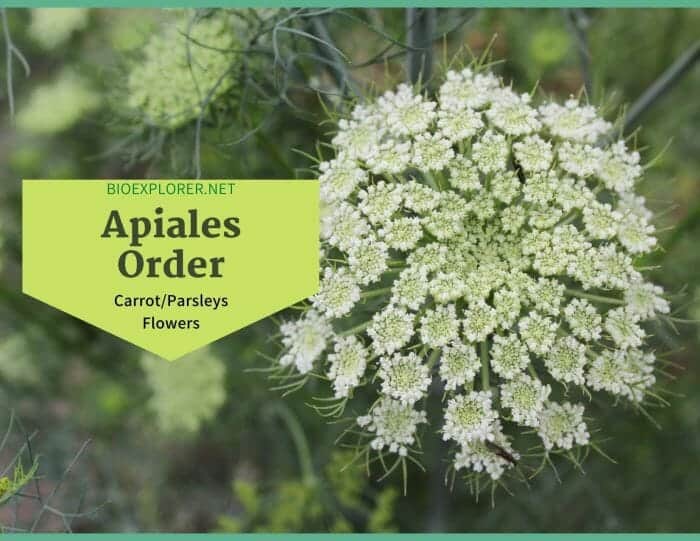
Apiales is an order of flowering plants belonging to Class Magnoliopsida, Subdivision Spermatophyta, and Division Tracheophyta. The species of Apiales are distributed worldwide and involve important and common plants like carrot, parsley, and ginseng.
Common characteristics involve branched and occasionally swollen taproots, flowers arranged in a conspicuous umbel, and 5-merous floral parts. The small and bisexual flowers are completely self-pollinating or part of the cross-pollinating taxa.
Table of Contents
Apiales Pronunciation
Apiales Families
Apiales, with 7 families[1] and 5,489 species is under the core asterid clade with a wide variety of species, including trees, shrubs, vines, and herbs.
The following are the direct children of Apiales:
- Apiaceae (Carrot family)
- Araliaceae (Ginseng family)
- Griseliniaceae (New Zealand broadleaf family).
- Myodocarpaceae
- Pennantiaceae (Kaikomako family)
- Pittosporaceae (Pittosporum family)
- Torricelliaceae (False-ivy palm family).
Apiales Distribution
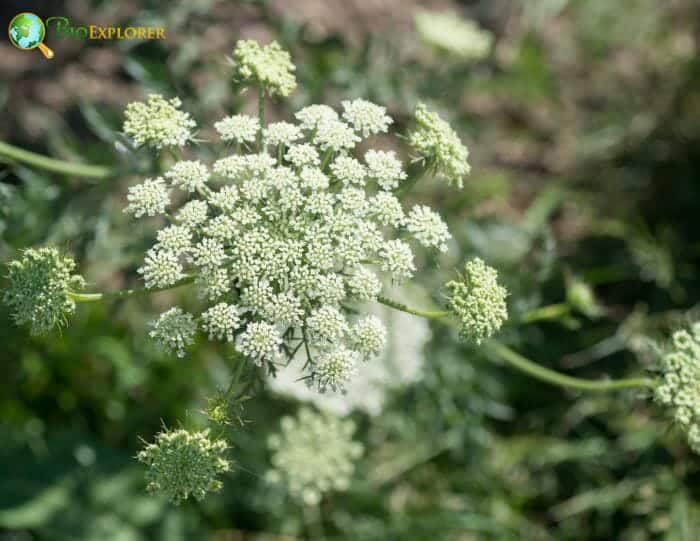
The carrot family (Apiaceae), with 446 genera and 3,820 species[2], are distributed worldwide except in the arctic regions.
- The main distribution is found in the regions of the temperate and sub-tropical. The ginseng family (Araliaceae), with 50 genera and 1,350 species[3], is distributed worldwide, with greater concentration in tropical regions. The plants of Pittosporaceae, with 9 genera, are found from tropical Africa to the Pacific Islands.
- The attractive Griseliniaceae[4] (1 genus and 6 species ) plants are found in New Zealand and South America. Myodocarpaceae (2 genera and 17 species ) thrive in New Caledonia, E. Malesia, and Queensland, Australia.
- The Torricelliaceae (3 genera and 10 species) are found in Madagascar, Southeast Asia, and Malesia.
- The plants of Pennantiaceae (1 genus and 4 species) are growing in northeastern Australia, Three Kings Island, Norfolk Island, and New Zealand.
Apiales Characteristics
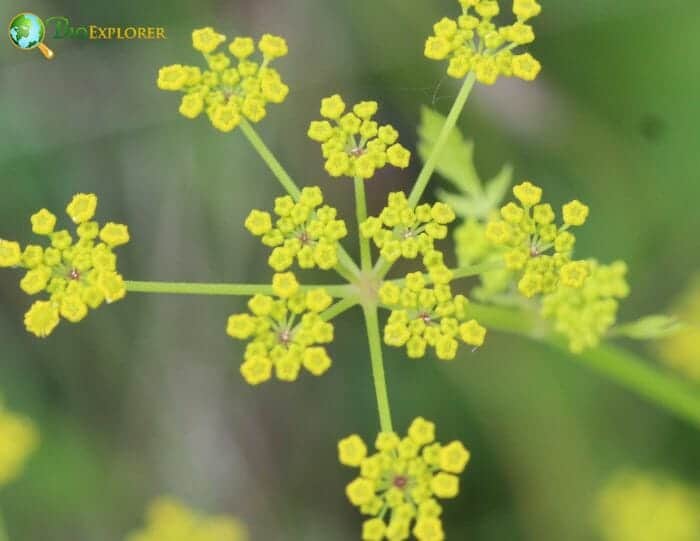
- Plant type: Members of Apiales include trees, shrubs, vines, and herbs.
- Roots: The taproots of the Apiaceae are branched and are occasionally swollen. The roots of Araliaceae produce ginsenosides (a variety of triterpene saponins) that have great medicinal uses.
- Stems: Stems are hollow (Apiaceae), pachycaulous (trees of Araliaceae). The resin is present in the stem ducts of Pittosporaceae. The stems are erect or protrate, glaucous or glabrous. Some species have climbing stems. For example, the stems of the Griselinia species are hanging.
- Leaves: The leaves of the members are pinnate, ternate, palmate, simple, or decompound. Other members are phyllodinous and evergreen. They are usually spiral. Some members are opposite or whorled. Species are stipulate or exstipulateWhat is exstipulate?Without stipules; Stipule is a small structure of appendage found at the base of some leaf petioles.. Sometimes, stipular flanges are present. The stomata is anomocytic.
- Flowers and inflorescences: The flowers are typically bisexual and small. The inflorescence is terminal, branched. The pedicels are articulated. Most plants are arranged in a conspicuous umbel (clustering flowers at the stem’s top). Some are solitary or in inflorescences of cyme, corymb, or thyrse.
- Sepals and Petals: The perianth is dichlamydeous and biseriate. Some species are uniseriate by the absence of the calyxWhat is calyx?A collective term for all the sepals of a flower; the lowermost whorl of floral orgrans (Plural form is calyces).. There are often 5 sepals in the calyx; aposepalous. These sepals are reduced or absent in some species. The petals are typically 5 (rarely 0) corolla; apopetalous. They are rarely calyptrate or basally sympetalous. The petals are valvate. Imbricate petals are present in some species.
- Stamens and Carpels: The stamens are usually 5 (-10); apostemonous, alternipetalous, whorled. The carpels are mostly 2 (-5 or more).
- Ovary and fruit: Members have a mostly inferior ovary (a few are inferior). The fruit is a schizocarp of mericarps (carpophores), a drupe, berry, or a loculicidal capsule.
- Seeds: The seeds of the members are oily endospermousWhat is endospermous?An embryonic nutritive tissue formed during double fertilization by the fusion of a sperm with the polar nuclei.. Some members are arillate.
Apiales Flowers and Reproduction
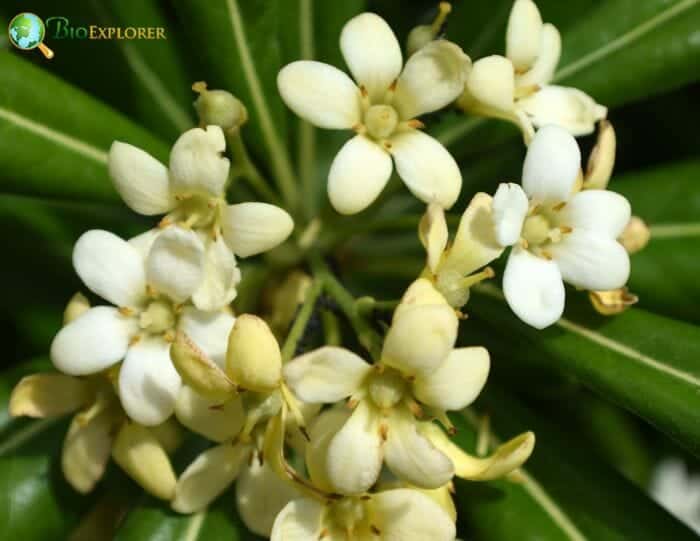
Apiaceae[5] flowers are small, bisexual, actinomorphic, and epigynous.
- They are often in a compound umbel. Usually, the involucral bracts subtend the compound umbel.
- The perianth of the flowers is commonly biseriate and dichlamydeous. Other flowers are uniseriate. Usually, there are 5 valvate petals in the corolla; apopetalous.
- The color of the petals may be white, pink, yellow, or purple. There are usually 5 small lobes in the aposepalous calyx.
- Sometimes, there is a reduction or absence of sepals in flowers. For example, there are 5 stamens in flower; apostemonous, alternipetalous, whorled.
- There is a syncarpousWhat is syncarpous?Having united carpels. Contrast apocarpous. ovary (inferior) in the gynoecium. Despite the uniformity in the structure of the flowers’ inflorescences[6], the Apiaceae family undergoes diversity in the mode of pollination.
- Members are entirely self-pollinated. Other species are part of the cross-pollinating taxa.
Araliaceae flowers are often bisexual, actinomorphic, and epigynous. A few are hypogynous.
- They are usually in heads or umbels. The flowers of these plants are typically tiny and greenish-white.
- The perianth is biseriate, but the sepals are reduced to 5-minute teeth adnate to the ovary.
- Some species lack the calyx. Instead, there are mainly 5-10 valvate or imbricate petals that arise from the nectary disk.
- There are 5-10 stamens, alternating with the petals. The flowers have a single compound pistil in the gynoecium, with 2-10 united carpels and an inferior ovary.
- In American ginseng[7], Panax quinquefolius, the individual flowers are protandrous and fully self-sterile. The insects help in the movement of the pollen within an inflorescence, allowing cross-pollination to occur.
- The wild bees from the Halictidae family are considered the major pollinator of this species.
The Pittosporaceae[8] flowers are primarily bisexual (some functionally unisexual).
- The plants are mostly hermaphrodites. They are actinomorphic and bracteates. The flowers are solitary or axillary or terminal cyme, corymb, or thyrse.
- The perianth is showy (yellow, cream, white, or blue), fragrant, and pentamerousWhat is pentamerous?Having parts in fives or multiples of five.. The calyx (aposepalous or basally synsepalous) possesses 5 sepals.
- There are also 5 imbricate petals in the usually sympetalous corollaWhat is corolla?A collective term referring to the petals of a flower.. The stamens are 5; alternipetalous, and the gynoecium is syncarpous.
Apiales Family Differences
The following are some of the differences between the 3 major families:
Apiaceae
- Most of the members are herbs. The shrubs and trees are less often.
- The species’ leaves are spiral, having a base with broad sheathing. Mostly, they are pinnate, ternate, or decompound. They have stipular flanges.
- The inflorescence of the flowers is commonly in a compound umbel. The involucral bracts subtend the flower. A few members have a simple umbel or a head.
- The flowers are small.
- The Apiaceae have an inferior ovary.
- The placentation is axile-apical.
- The fruit of the members is a schizocarp with carpophores.
Araliaceae
- The members of Araliaceae are trees, shrubs, lianas, or herbs.
- The leaves of the members are usually spiral. A few species are opposite or whorled. Some members are palmate or pinnate.
- The inflorescence is commonly terminal umbel, head, racemose, racemose-umbellate, or racemose-paniculate. Sometimes, they are in racemes or spikes. In rare cases, the flowers are solitary.
- The flowers are very small.
- The plants have an inferior ovary (rarely superior).
- The placentation is apical-axile.
- The fruit is a berry, a drupe, or a schizocarp with carpophore.
Pittosporaceae
- The species of this family are trees, shrubs, or lianas. Some members possess thorns.
- The leaves are evergreen and simple. Most of the species are spiral. Sometimes the leaves are whorled at shoot apices. The leaves are exstipulate and resemble the texture of the leather (coriaceous).
- The flowers are solitary or in inflorescences of terminal or axillary corymbs or thyrses. The flowers possess 2 bracteoles.
- The flowers are often showy. This is because they are medium-sized or large.
- The ovary is superior.
- The placentation is usually parietal.
- The fruit is a berry or a loculicidal capsule.
Apiales Example Species
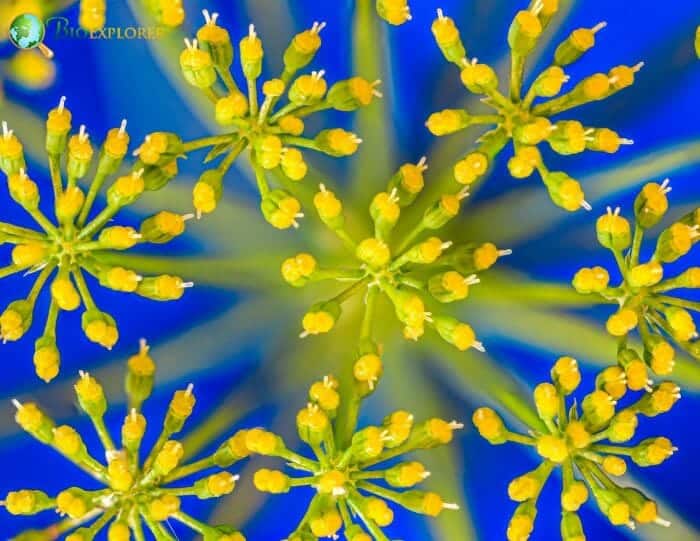
This order comprises important and common plants. The following are examples of the Apiales species.
- Carrot[9]: The edible part of this plant is the root. Carrot is an important food crop. It also has medicinal benefits.
- Parsley[10]: Parsley is commonly used as a vegetable, spice, and culinary herb. It is also used for essential oils, pesticides, and traditional medicine.
- Parsnip: The parsnip is commonly used as a root crop, spice, culinary herb, and vegetable. It is also utilized as fodder/animal feed[11].
- Japanese angelica tree[12]: The young shoots are edible. The tree has many medicinal benefits.[13] It can also be used as an ornamental plant.
- American ginseng[14]: American ginseng has many medicinal benefits. In addition, the oils and extracts from this plant are also utilized for making soaps and cosmetics.
- Yemo chico[15]: The plant has good ornamental value.
- Heart-leaved kohuhu[16]: This plant has medicinal uses.
- Weeping pittosporum[17] is commonly used as an ornamental plant in gardens.
- Three kings kaimako[18]: This species is threatened by habitat loss and has been successfully propagated.
- False Ivy-palm: The plant has ornamental foliage and forms making it suitable for garden and park landscaping. Aside from being medicinal, the plant produces red hardwood used for flooring, tables, and more.

























